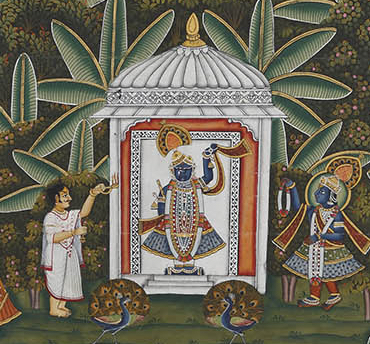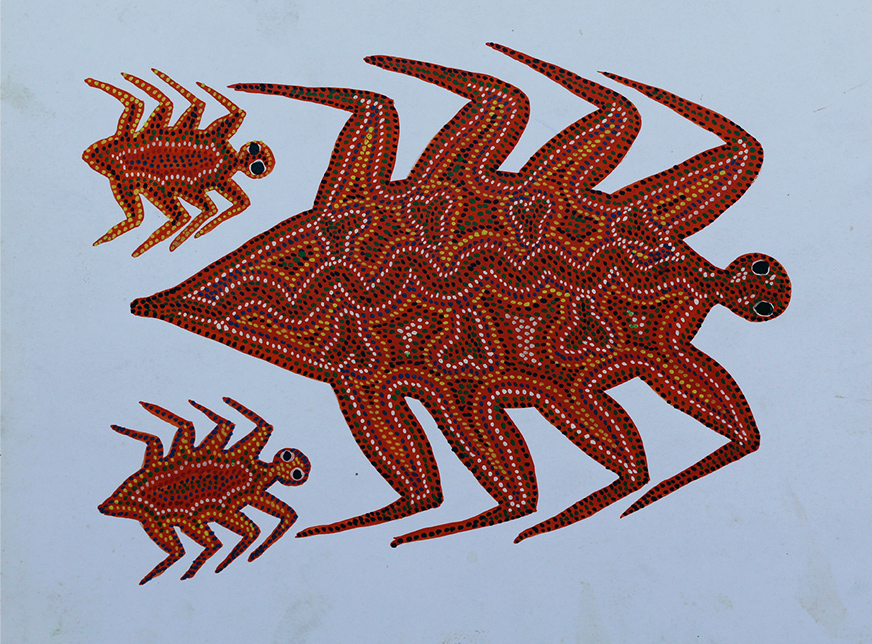
Painting by Bhuri Bai ©️ Sarmaya Arts Foundation
Born in Pitol village of Madhya Pradesh, Bhuri Bai loved to create from a very young age. Her mother noticed and encouraged this artistic spirit, coaxing her to paint on the walls of their hut. Bhuri and her mother are part of the Bhil tribe, the largest in India, and the young artist would spend hours observing the priests of the community making Pithora paintings. These centuries-old ritualistic artworks are made to observe festivals, mark wedding ceremonies, ward off evil or simply to worship the adivasi deity, Pithora Dev or Pithora Baba.
Bhuri moved to Bhopal in the 1980s after she got married and worked with her husband at a construction site. Fortuitously, the structure they were building was for Bharat Bhavan, the legendary art centre founded to support the region’s performing and visual artists. At the time, it was being run by the contemporary artist J Swaminathan, who took a keen personal interest in finding, grooming and nurturing talent from the state’s vast tribal communities. He discovered the Gond genius, Jangarh Singh Shyam—a discovery that changed the fortunes of the artists’ extended family as well as broadened the definition of modern Indian art. What Swaminathan did for Bhuri Bai and Bhil art was every bit as transformational.
From labourer to artist-in-residence
Bhuri Bai explains in this Sahapedia interview how she first encountered J Swaminathan, then the director of Bharat Bhavan. He was asking around among the Bhil labourers who their gods were and what they looked like. As they all struggled to explain the deities they’d left behind in the village, Bhuri’s sister nudged her forward and asked her to paint a picture for Swaminathan. For the first time, she used acrylic paint and paper to make her art. Swaminathan loved her work and paid her nearly double her daily wages for it.
In the video, you can see that years later Bhuri’s wonder at being paid to ‘just sit and draw’ is still vivid. It took her family some getting used to too. To calm any suspicions, Swaminathan gave her husband a job as a watchman at Bharat Bhavan so he could understand better what his wife was now doing for a living. Soon, she taught others in the family how to paint and Bhil art as we know it today began to come to life.
Bhil vs Gond
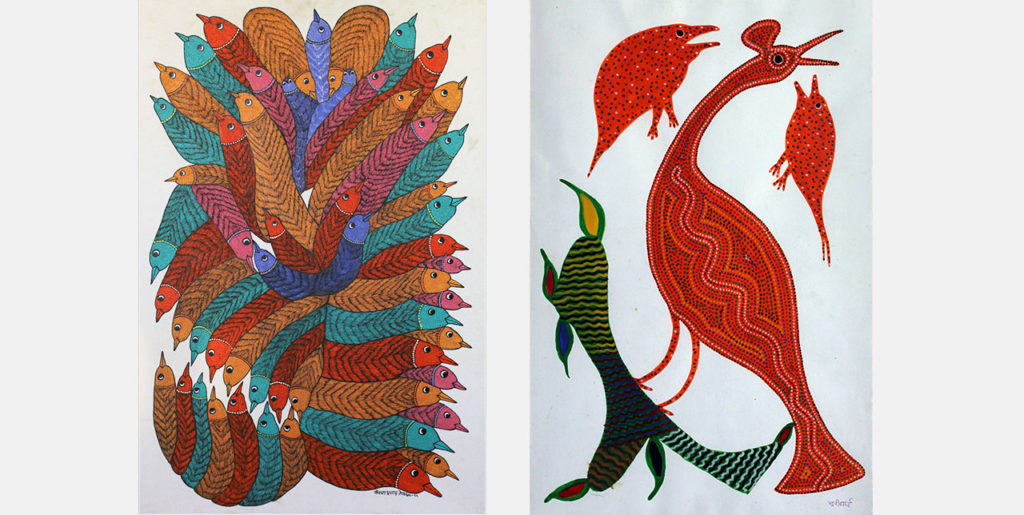
(Left) ‘A Collective of Birds’ by Kaushal Prasad Tekam, (Right) Birds by Bhuri Bai ©️ Sarmaya Arts Foundation
The two art forms are sometimes confused and on the face of it, there are a few similarities. The use of bright colours, simple forms, naturalistic themes and a common landscape of Central India inform both Bhil and Gond paintings. They can both trace their birth as modern genres to Bhopal and Bharat Bhavan. But there are significant differences too. While Gond art sprang to life completely from the being of one person, Jangarh Singh Shyam, Bhil can trace its artistic lineage to Pithora paintings—before Jangarh, no one had ever drawn the Gond deity Bada Dev, whereas images of the Bhils’ Pithora Dev was drawn ritually in their villages. Both outline fantastic shapes from nature, but while Gond paintings use a variety of patterns like dashes, waves, dots etc to add texture, Bhil art uses only dots. It’s for this reason that Bhil paintings have been compared to that made by Australian aboriginals.
Bhuri Bai meets world
Not long after she first picked up a brush, in 1986 Bhuri Bai was awarded the highest state honour for artists, the Shikhar Samman. This was followed by other awards and her work began to be shown and bought by galleries in Europe, the United Kingdom, Australia and America. One of her paintings, ‘Story of the Jungle’, was auctioned by Sotheby’s in 2007. To detail her fantastic journey from birth to fame, Bhuri painted a Bhil mural on a 70-foot wall of the Tribal Museum in Bhopal.
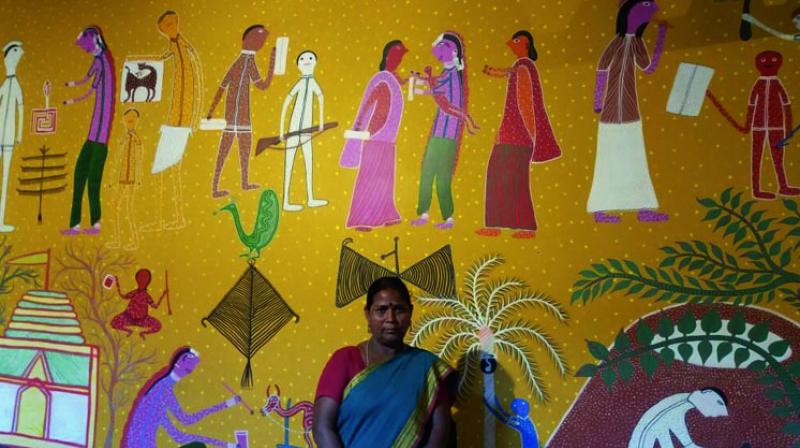
Bhuri Bai in front of her mural at the Tribal Museum, Bhopal, image courtesy Asian Age (click on the image to visit the link)
The paintings in the Sarmaya collection are all inspired by nature and rather than mimic the jungle, they bring to life an ideal, primitive wilderness. Bhuri Bai uses strong colours—rich burnt oranges, lush deep greens, inky velvet blues—and breaks them up with hypnotic strings of dots. The dots serve various functions. They might demarcate sections on a figure (neck feathers from wing, for example) or provide a pretty texture or impart a sense of bristling movement. Nurturing is a big theme across these works, as birds feed their fledglings, a tiny elephant snuggles under a larger one and a tortoise splashes in a pond with its baby.
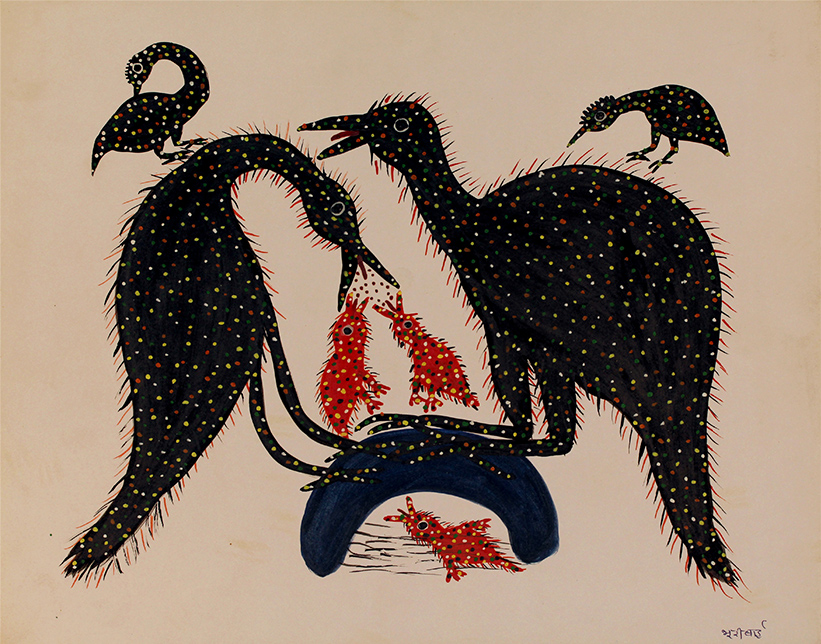
Painting of birds and chicks by Bhuri Bai ©️ Sarmaya Arts Foundation
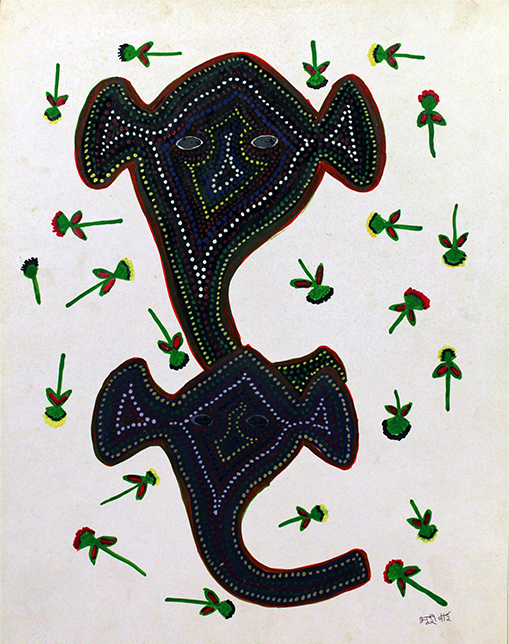
Painting of elephants by Bhuri Bai ©️ Sarmaya Arts Foundation
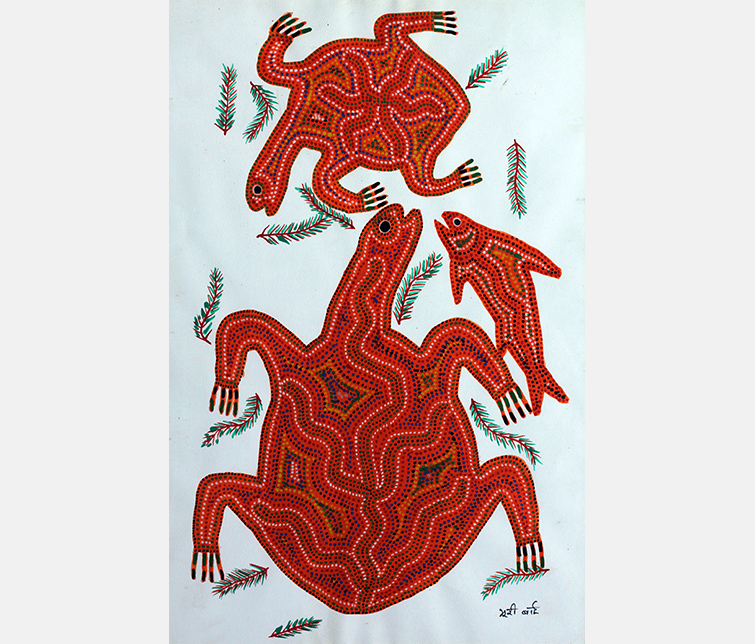
Painting of tortoises and fish by Bhuri Bai ©️ Sarmaya Arts Foundation
If Bhil art enjoys fame in the art world today, it’s in large part due to trailblazing artists like Bhuri Bai and Lado Bai and the leap of faith they took with J Swaminathan all those years ago. And Bhuri took her community along with her. The next generation of Bhil painters includes her nephews Sher Singh and Dubu Baria, who trained her. Incredible to think that someone with a name that translates to brown (‘bhura’ is the Hindi word for brown) could bring so much colour into so many lives.
Bhuri Bai was one of the five artists whose Wikipedia profiles we edited as part of Sarmaya’s event for Art+Feminism 2019. Visit Bhuri Bai’s Wiki page by clicking here



